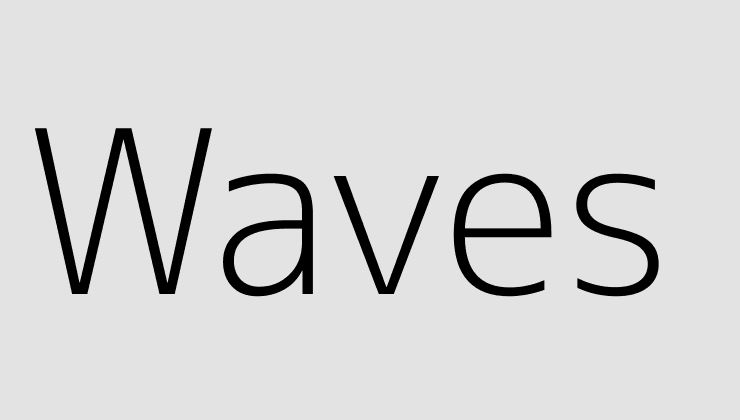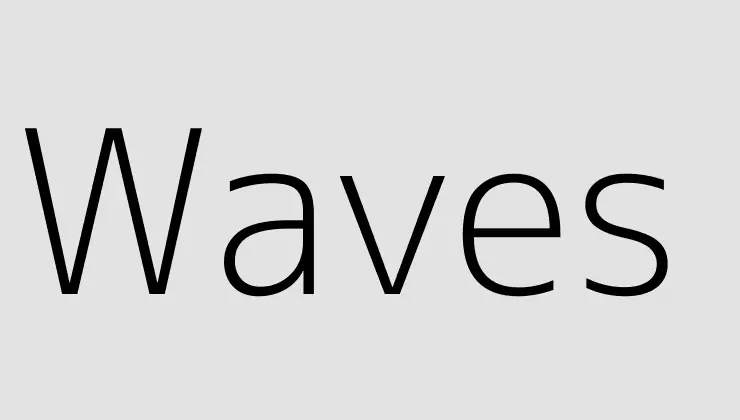Waves fiyatı şu anda XX dolar seviyesinde. Waves, kripto para piyasasında önemli bir yere sahip ve yatırımcıların ilgisini çekiyor. Son dönemde fiyatlarındaki hareketlilik nedeniyle Waves hakkında birçok yorum yapılmıştır. Waves yorumları ve fiyat hareketleri hakkında daha fazla bilgi edinmek için bu başlığı inceleyebilirsiniz.

There are many different types of waves, both natural and man-made, that we encounter in our daily lives. From ocean waves to sound waves to radio waves, waves are all around us and play an important role in our world.
H1 Heading: Introduction to Waves
Waves can be defined as a disturbance or oscillation that travels through a medium, which can be a solid, liquid, gas, or even a vacuum. This disturbance can be caused by many different things, such as the movement of particles or changes in pressure.
H2 Heading: Types of Waves
There are many different types of waves, each with their own unique characteristics and properties. Some of the most common types of waves include:
H3 Heading: Ocean Waves
Ocean waves are perhaps the most well-known type of wave, and are created by the movement of wind over the surface of the ocean. These waves can vary greatly in size, from small ripples to massive swells that can be hundreds of feet tall.
H3 Heading: Sound Waves
Sound waves are created by the vibration of objects, such as a guitar string or the vocal cords in our throats. These waves can travel through air, water, or solid objects, and are what allow us to hear the world around us.
H3 Heading: Electromagnetic Waves
Electromagnetic waves are a type of wave that includes radio waves, microwave radiation, infrared radiation, visible light, ultraviolet radiation, X-rays, and gamma rays. These waves are created by changes in electromagnetic fields, and can travel through a vacuum.
H2 Heading: Properties of Waves
All waves have certain properties that define how they behave and interact with their environment. Some of the most important properties of waves include:
H3 Heading: Wavelength
Wavelength is the distance between two consecutive peaks or troughs in a wave, and is typically measured in meters.
H3 Heading: Frequency
Frequency is the number of waves that pass a point in a given period of time, and is typically measured in Hertz (Hz).
H3 Heading: Amplitude
Amplitude is the height of a wave, and represents the amount of energy that is being carried by the wave.
H2 Heading: Applications of Waves
Waves have many practical applications in fields such as communication, medicine, and entertainment. Some common examples include:
H3 Heading: Radio Waves
Radio waves are used for communication, such as in radios, cell phones, and Wi-Fi.
H3 Heading: Ultrasound Waves
Ultrasound waves are used in medical imaging, such as in ultrasounds and sonograms.
H3 Heading: Light Waves
Light waves are used in entertainment, such as in movies and television shows, as well as in technologies like lasers and fiber optic cables.
H2 Heading: Conclusion
In conclusion, waves are an important and fascinating part of our world, playing a role in everything from communication to entertainment to our very ability to hear and see. It’s important to understand the different types and properties of waves, as well as their various applications, in order to fully appreciate their impact on our daily lives.
FAQs:
1. What causes ocean waves?
2. How are electromagnetic waves different from other types of waves?
3. What are some common applications of waves in medicine?
4. How are sound waves used in music?
5. Can waves travel through a vacuum?
